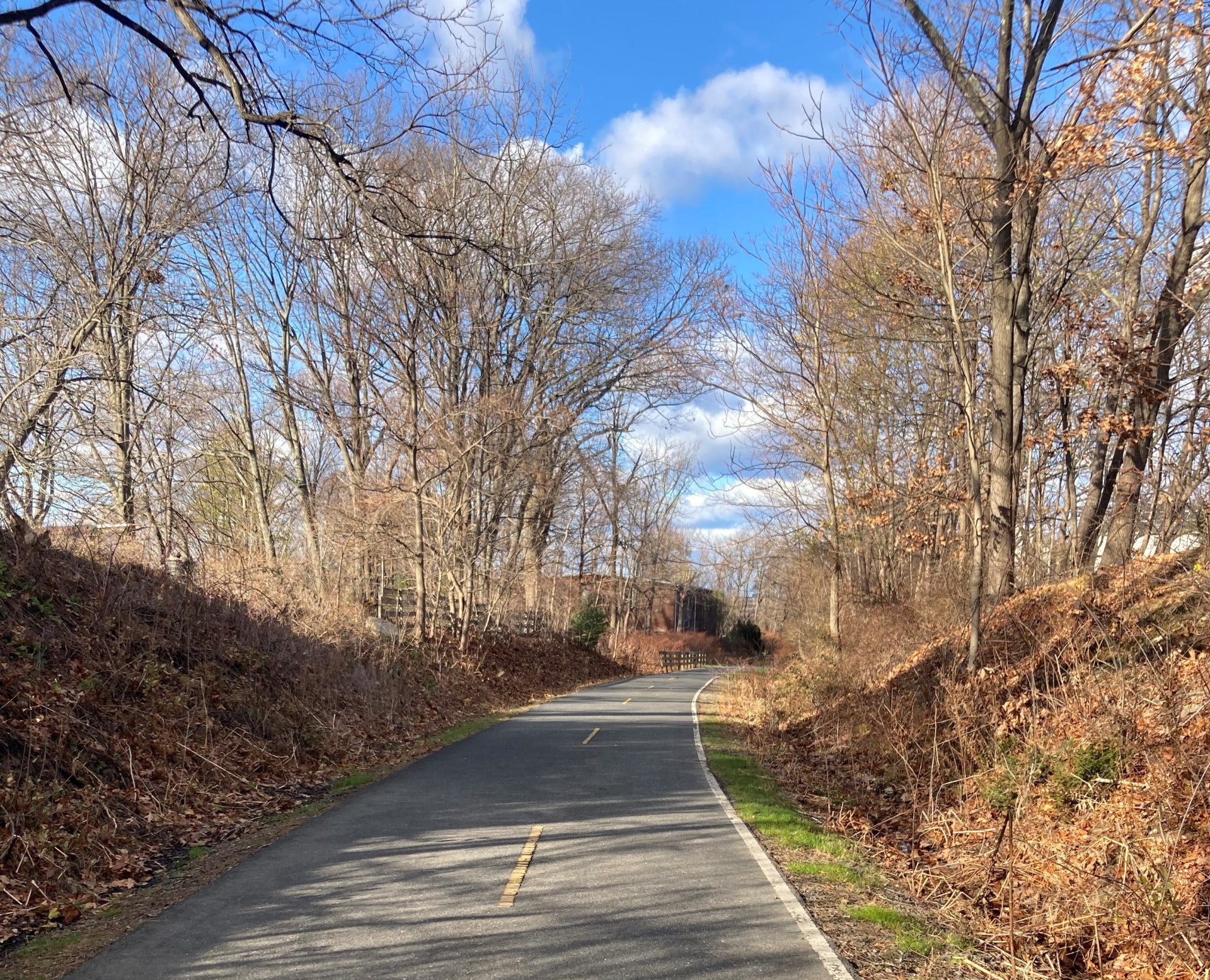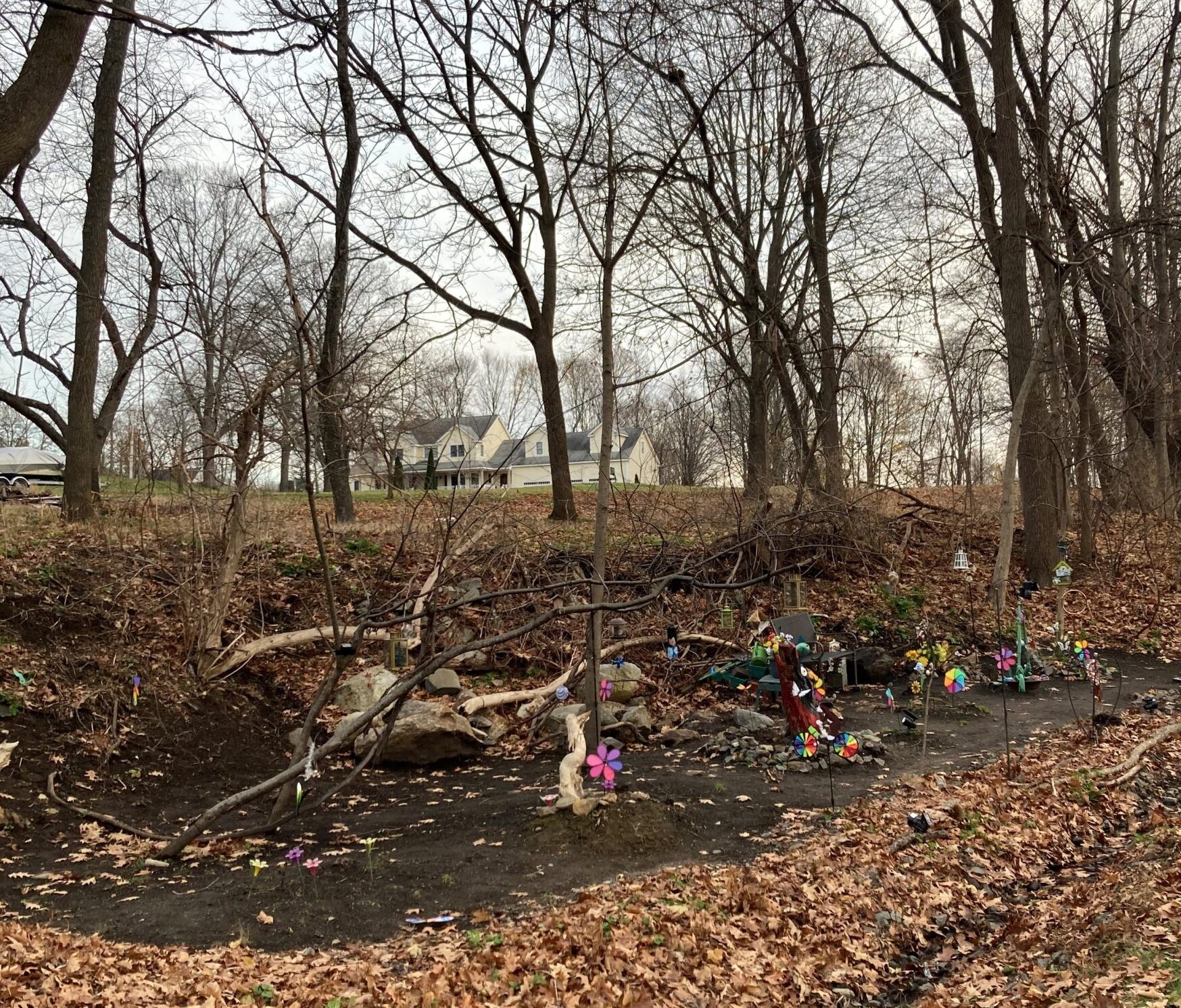One touch of nature makes the whole world kin.
-William Shakespeare
Waldo and I are finally back to our almost daily routine of walking 7.5 miles (six on the rail-trail and 1.5 for poop and pee). Once again, we’re going down the rail-trail, rain or shine, hot or cold. We missed those days where Waldo came home full of burs from the weeds he insists on burying his face in, we missed hearing the black walnut fruits falling to the ground with audible thuds and we missed watching the Japanese knotweed wither and die in long hedgerows a short distance off the path. But now, we see daily the entirety of our piece of New England forest as it snuggles into the last throes of its winter hibernation. Except for the autumn olives, that seem to have noticed a change, but are still in denial of it, nature looks very much like winter has come and firmly ensconced itself on the landscape, even though it’s still a few days before the winter solstice. All that’s missing is the snow — the forecast says that’s coming next week.
I look out over the trees, what’s left of the bushes, the grasses and mosses and all of life out here and I’m struck by how it all fits together so tightly. In places where grass doesn’t grow, moss does. Even lichens grow on rocks where nothing else will. Where trees don’t rob the ground beneath them its share of sunshine, bushes and weeds flourish. Ferns and mushrooms have their place, as do the mammals, birds and insects. All of nature fits together almost seamlessly — like those stone Incan walls in the Andes where huge rocks have been fit together so well that a piece of paper can’t be forced into the cracks between them. And yet no one is designing or directing the final form that nature takes. It is truly a case of emergence, an example of the whole being more than the sum of its parts.
Emergence, which occurs when an entity develops properties its composite parts don’t have, has many examples in nature. Ants building their tunnels do so without direction, yet the final design, a well-organized colony, results from the communal effort. Starlings fly in huge shifting clouds whose shapes undulate and pulse as if an integrated unit, yet no single bird is in control of what they do. Economies grow, thrive and take on a life of their own, yet no one is in control and none can truly understand them. Even human consciousness can be seen as an emergent property of the brain’s neurons.
The human brain has around 86 billion neurons. Each neuron has several axons that connect it to other neurons. These neurons are not exactly the same and they interact through their axons. Through these interactions, the states of the neurons adapt and change, allowing for human consciousness, an emergent property. No neuron can be conscious, it simply doesn’t have the complexity to allow for consciousness. Yet, somehow, these same neurons, through all of their interactions, produce self-awareness, intelligence, creativity and all the aspects of the human condition we call “thinking.”
Mother Nature is another system, more complex than the human brain, because, after all, she includes all of our brains. As I walk down the trail, I am acutely aware of nature’s trees and grasses, mosses and bushes and rabbits and squirrels. I don’t see them all, individually, but I know they’re there. I know it because I see the results of their presence – a harmonious chorus of life that would not be able to sing the same tune if any one of them were missing. Yet, there is no conductor. Nature has so many more parts, and so much more diversity than a human brain, all interconnected and interacting, each able to adapt to its environment, that I can’t help but wonder at the emergent properties she may have that we just haven’t yet figured out.
Waldo and I are connected. There are only two of us, not much diversity there, but we interact and adapt to each other. If I were to guess as to the emergent property of our little bubble of existence, I would call it a sense of family. A sense that there is something between us that is greater than the sum of Waldo and me. A feeling that there is Waldo, there is me and there is us. There is a difference between the two of us as a unit and each of us individually. At the very least, that comes with feelings of belonging, caring, compassion and love that is not there, one without the other.
In the same way, we are all part of nature. To a much greater depth and extent than the case of a human brain, there is complexity to life on Earth and it has emergent properties, some, we are not aware of. But some, we are. We should never lose that feeling of belonging to nature, respecting it, loving it, being awed by it and caring about it. After all, like the moss and the grass, the trees and the bushes, the rabbits and the squirrels, the birds and the insects, we all have our place.
We all belong to each other.



